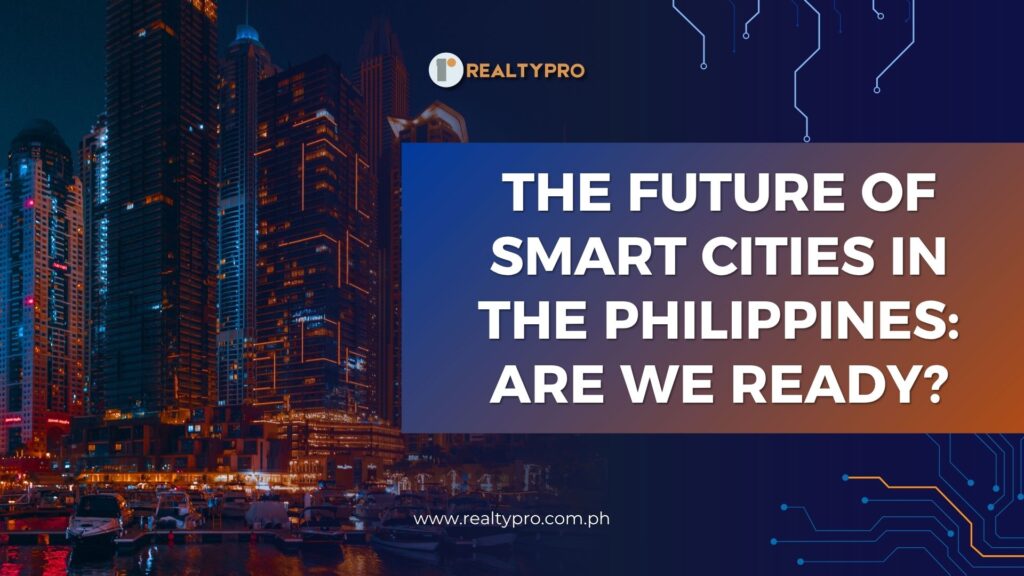The Future of Smart Cities in the Philippines: Are We Ready?
A Glimpse Into the Smart City Vision
Imagine a city that reminds you when the bus is arriving, automatically reroutes traffic when an accident happens, dims streetlights to save energy when no one’s around, and routes ambulances along the fastest, least-congested streets.
That’s the promise of a “smart city”: urban areas that use sensors, data, and connected systems to improve quality of life, make services more efficient, and respond faster to problems.
For the Philippines — an archipelago with booming urban centers and unique climate risks — the idea is irresistible. But how ready are we to turn the smart-city promise into everyday reality?
Why Smart Cities Matter for the Philippines
Urbanization in the Philippines continues to push more people into cities. With that growth comes familiar problems: congested roads, deteriorating air quality, strained water and waste systems, frequent flooding, and uneven access to public services.
Smart-city solutions can help address these issues in three key ways:
- Efficiency — Data can make public services work better. Smarter traffic lights, predictive maintenance for public infrastructure, and optimized waste collection routes mean less time and money wasted.
- Resilience — Real-time sensors and early-warning systems can give cities the edge during storms, floods, and other disasters — critically important for our typhoon-prone towns.
- Inclusion — When designed well, smart services can expand access to health, education, and mobility for underserved neighborhoods — not just central business districts.
The Building Blocks: Technology, Policy, and People
A functioning smart city isn’t just about gadgets. It’s the blending of three pillars:
- Technology & infrastructure: sensors, reliable broadband, data platforms, and secure cloud systems. Without reliable internet and power, many smart solutions stall before they start.
- Policy & governance: clear rules on data use, cross-agency coordination, procurement practices that prevent vendor lock-in, and regulations that protect citizens’ privacy.
- Human capacity & community engagement: city staff trained to use data, private sector partners to innovate, and residents who understand and trust the technology.
Right now, many Filipino cities have pockets of smart projects — traffic-monitoring cameras, automated fare systems in public transport, and pilot flood sensors — but a fully integrated, city-wide system is still a work in progress.
Key Challenges We Must Face
- Digital divide and connectivity: Not all barangays have the same access to fast, reliable internet. Smart services that assume universal connectivity risk excluding marginalized communities.
- Funding and procurement: Smart-city projects can be expensive. Cities need sustainable financing — not just band-aid grants — and transparent procurement to ensure value for taxpayers.
- Data privacy and security: Collecting more data raises the stakes. Without strong privacy safeguards and cybersecurity measures, personal data could be misused or exposed.
- Inter-agency coordination: Urban problems are cross-cutting. Transport, health, public works, disaster management — they must share data and plan together. Silos slow progress.
- Scalability and adaptability: Pilot projects are easy; city-wide scale-up is hard. Systems should be modular and vendor-agnostic so cities aren’t stuck with obsolete tech.
Practical Steps Toward Readiness
- Start with people-first problems. Focus on solutions that directly improve citizens’ daily lives — like flood alerts, reliable transit info, or faster health referrals — rather than flashy tech for its own sake.
- Invest in digital infrastructure across the city, prioritizing underserved areas to avoid deepening inequality.
- Create clear data policies that balance innovation with privacy and open-data standards that allow academics and startups to build value-added services.
- Build public–private partnerships that share risk and align incentives, while keeping transparency and accountability front and center.
- Train local government staff on data literacy and project management so initiatives don’t depend solely on consultants.
A Hopeful Outlook — But It’s a Journey
The Philippines has creativity, vibrant tech talent, and a civic energy that can fuel smart-city growth. Our climate realities and urban pressures make smart solutions not just nice-to-have, but urgent.
However, readiness isn’t just measured by pilot projects or LED streetlights — it’s about building equitable, resilient, and well-governed systems that people trust.
Konklusyon
Sa totoo lang, ready tayo maybe for ilang bahagi ng smart city — may mga piloto at interest — pero hindi pa full-scale. Kailangan muna nating ayusin connectivity, policies, at most mahalaga, trust ng tao.
Kung gagawin natin ‘to nang tama — people-first ang projects, transparent ang pag-gasta, may strong privacy rules at trained na local staff — malaki ang chance na makuha natin ang benefits: less traffic, better serbisyo sa health at disaster response, at mas maayos na buhay sa lungsod.
Kaya oo, may potential tayo… pero kailangan ng plan, pera, at puso para talagang maging smart ang future ng ating cities.
For more information & updates visit REALTYPRO
For Legal and Real Estate Assistance, Click Here
#rltypro


